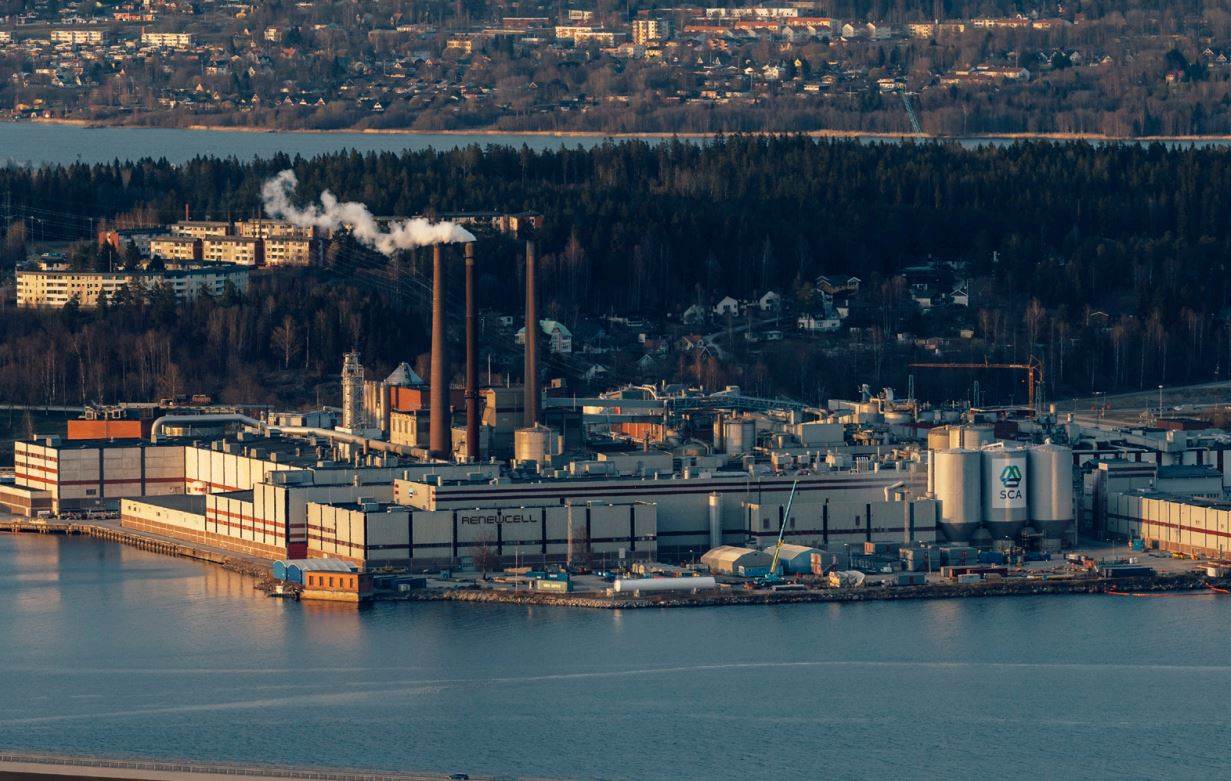Renewcell outlines ‘extraordinary’ year

The CEO of Swedish regenerated textile company Renewcell has outlined the company’s “extraordinary” year in its first annual report.
At the start of 2021, it had an empty facility in Ortviken with only two employees at the site, and ended the year with 90 employees there who are finalising the machinery to start operations this summer.
It signed partnerships with Kelheim, Birla and Daiwabo as well as brands including H&M, Levi’s, Bestseller and Gina Tricot, and initiated projects with Inditex, PVH, Kering and Ganni.
CEO Patrik Lundström said: “2021 will be remembered as a truly extraordinary year in Renewcell’s history.
“An unexpected effect of pandemics, war and accelerating climate change is that the transition to a sustainable society has sped up. The transition will be one of the most significant industrial revolutions/evolutions that humanity has experienced.”
Renewcell estimates that if brands are to reach their commitments of achieving a sustainable material mix by 2030, the production of Renewcell’s Circulose and equivalent materials will need to be approximately 7 million metric tons – which means the company will need to scale up production quickly to meet demand. It has brought forward the expansion of its annual capacity from 60,000 metric tons to 120,000 metric tons by two years.
Mr Lundström added: “Like most businesses during the turbulent past year, we have experienced challenges in terms of deliveries of building materials and key components as well increased costs for, among other things, concrete, alloy surcharges, currency and not least freight and delays at suppliers. I am grateful that our careful pre-work to minimise risk in the beginning of the project has enabled us to hold back cost increases to a large extent.”
Renewcell’s process to make Circulose consists of five main steps. Firstly, bales of textiles with high cellulose content are placed on the conveyor belt and mechanically shredded, after which they are ground down in a shredder to adjust the length of the fibre. Large contaminants such as buttons and zips are mechanically separated.
The ground-up textiles are then run through a wet stage where the fibres are further separated and certain dyes are removed with chemicals that are recycled and consumed in a closed loop. The material is also processed to adjust the properties of the cellulose such as viscosity and reactivity. The wet pulp is then sent to the bleaching stage, bleaching the dye that could not be removed in the preceding step.
Renewcell’s technology manages non-cellulosic contaminants through several steps that clean the pulp of these contaminants. The result is natural cellulose. The contaminants are diverted to a reject stream and then handled as waste.
The company has also invested in an expanded sourcing organisation and signed long-term agreements to help access enough input materials.
It employs 123 with a goal of reaching 130 by the summer. Most of the new staff are from the discontinued production of graphic paper at SCA Ortviken PM5 (pictured), which it has adopted as its new facility.








